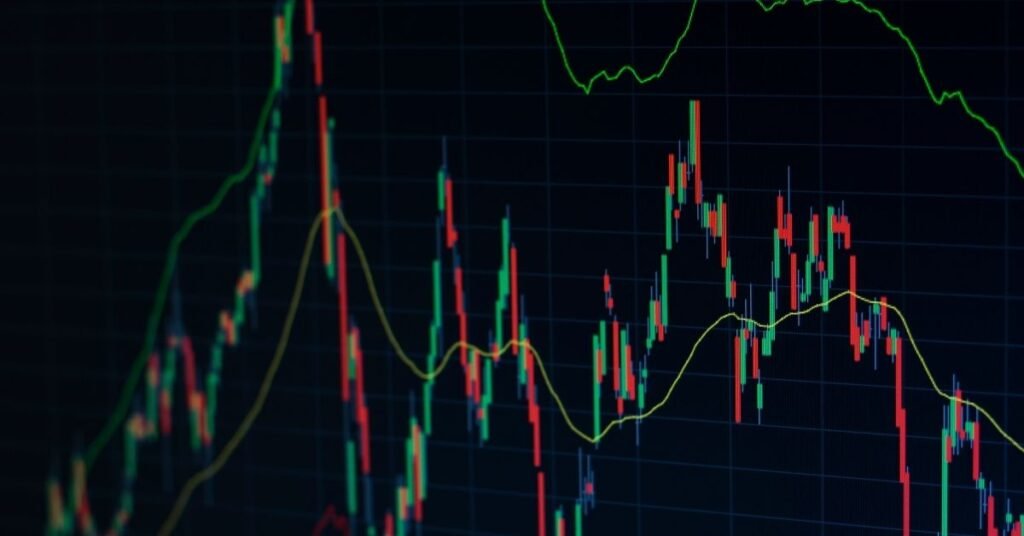Hey there! Have you ever wondered how to predict the stock market using math, or just how to predict stock market trends? What are the tools and techniques to predict the market? What are the various ways one can maximize the level of profits? I am here to tell you guys a few methods that answer the question of predicting stock market trends.
Before that, let me quickly give you a disclaimer. The stock market contains a high risk of financial nature, and the methods mentioned here may or may not get you your desired results. So let us get on with our topic.
So, how to predict the stock market using math is a bit of a tricky question. Unfortunately, there is no such mathematical technique (Or, for that matter, any technique) present that can accurately predict the movement of stocks in real life. Yes, there are methods by which you can earn profits over the short or medium term, but the best way to make money from the stock market always lies in the long term with a personalized portfolio.
1. CALCULUS
The first and foremost mathematical technique that helps an investor determine the movement of the price in the stock market is Calculus. A staple in the stock market and my enemy.
Calculus is the study of continuous change and is therefore essential for a stock market investor.
An investor can predict short-term movements in theory with the help of calculus and statistics. This is where probability comes in. Financial analysts work day and night to try and find a trend using the past few month’s data. They use the past data to predict the future data, and after they manage to find a pattern, they project it on a graph for better visualization. Unfortunately, I cannot elaborate on the specifics since I am not a certified entity. Instead, I would suggest you take up some good stock market courses.
2. MARTINGALES

Martingale is the mathematical method of predicting the future price of a stock based on the stock’s current price. According to this theory, past returns or results do not matter in present scenarios and predict future prices.
This concept is part of probability theory. This concept of martingales suggests that the best bet on tomorrow’s stock price is today’s price of the stock. A martingale where the next price value is predicted to be higher is known as a sub-martingale.
In this theory, the current stock price and volatility rate are the only inputs for future predictions. This trend has been consistent for over 8 decades of stock market pricing.
Read More: Top 10 Stock Market Tips
This theory assumes that the stock market movements are purely random. Let me explain with an example:
If you had 100Rs, and a dice roll of 6 would give you 500Rs, but any other number means you lose the 100Rs too. So, in this case, there are two possibilities, i.e., you end up with 600Rs after getting 6 (1/6th chance), or you end up with nothing (5/6th chance). The prediction of the results after the dice roll is the martingale in this case.
Let us see some more techniques on how to predict the stock market using math.
3. RATIOS
This technically does come under math since calculations are required. However, there are many ratios used in the world of finance, out of which there are 2 that stand out when it comes to investing decisions – Price to Earnings ratio and Return on Assets.
Why? Let me enlighten you.
What is the Price to Earnings Ratio? It is the ratio used to calculate the cost incurred by the business to earn one unit of the particular currency. So, in general, it is the cost incurred to make one dollar.
Why is it so important? Investors will buy the shares of that company, which has a lower P/E ratio, which will mean that they are paying a lower amount to gain one dollar. A high P/E ratio would suggest that the company is paying a higher cost for earning one dollar. However, a high P/E ratio doesn’t necessarily mean a bad thing. A high P/E ratio means that the investors see considerable growth potential in the company for the future. P/E = Price/Earnings or in the stock market price of the share/Earning per share.
Its example time: A company’s earnings for 2020 were 1 lakh Rs, whereas the fixed costs incurred were 5 lakh Rs. The P/E ratio, in this case, will be 5 Lakhs/1 Lakh = 5 times. So, for every 1 dollar made, 5 dollars were spent. Also, it’ll take the company 5 years to reach the break-even point on the current trend.
What is Return on Assets? It is the ratio used to check the profitability of any business based on its assets. So, essentially it is the report of how efficient a business’ management is in utilizing the assets acquired. The higher the ROA, the better the company’s management system, the better performance of the business.
Why is ROA important? It gives the true profitability of a company, as it considers even the company’s debt, unlike ROE, i.e., Return on Equity. Second, it shows how good the company is at making the most out of limited resources. Third, investors will invest in a business that knows how to handle its assets well. The formula for ROA is Net Income/Total Assets.
Read More: Best Stock Market Quotes
An example must be taken: Suppose firm A just acquired a new machine for 5 lakh Rs, and the earnings for the year 2020 were 1 Lakh Rs. The ROA, in this case, will be 1 Lakh/5 lakhs = 0.2, i.e., 20%. So, in short, every dollar invested in the business by firm A generated 20% of net income.
But why only P/E and ROA? Collectively, these two ratios give a brief idea of how the company conducts its business. How well can it manage its resources, and how much growth to expect from the business. Thus, a low P/E ratio matched with a high ROA ratio is ideal.
They both have their shortcomings, but these are generally used to predict whether the stock is undervalued or overvalued. This method is used worldwide by fundamentalists. While these ratios provide a short answer to how to predict stock market trends, the following method is the broader version of this one.
4. FUNDAMENTALS OF THE COMPANY

This method is a rather long one. Let me start by first explaining what fundamental investors are. These investors evaluate the fundamentals or the company’s actual value using the company’s data. This data can include various financial statements like balance sheets and cash flow statements, etc.
The ratios we saw in the previous point are calculated using the financial statements of the company. So first, we saw the easy way of calculating those ratios; a fundamental investor has to calculate every aspect of the ratios from the giving statements. So now let’s see the detailed version of it.
First off, let me tell you the company’s actual value is known as its intrinsic value, and it is the same value that helps determine whether a stock is overvalued or undervalued. The most important thing in this theory is understanding the correlation between the financial statements. Correlation is always important when it comes to investment decisions.
Firstly, an investor must know how to read the financial statements and understand them as well, as it helps in understanding the fundamentals of the business. Next comes understanding the business fundamentals, including the growth potential, profitability, management efficiency, and other factors.
Next comes evaluating the fair price of the stock or the intrinsic value of the stock using math. This will answer the question of how to predict the stock market using math.
There are various ways by which one can determine the fair price of a stock. The most common method is discounting of future cash flows and the future PE-EPS method.
As I mentioned before, I cannot disclose the details of the mathematical operations. I will suggest once again a stock market course.
Anyhow these methods help an investor find the intrinsic value of any share; although these methods might not be 100% accurate, these provide a sound and logic-backed approach. Moreover, once you get the hang of it, you can start predicting the prices of the shares in short-term periods almost accurately.
There are very few people in the world that can accurately judge the intrinsic value of the company. So remember, the most important step is to find the correct correlation between the financial statements and the fair price of the company’s share.
Read More: Stock Market Books for Beginners
The last step is to compare the share’s intrinsic value with the current market price of the share. If the intrinsic value is greater than the market price of the share, the share’s price will increase in the near future. But, if the share’s intrinsic value is smaller than the market price, then it is likely that the market price of the share will decrease in the near future.
For example – A share’s CMP is ₹100, and the investors found that the intrinsic value is estimated to be ₹110. So, naturally, they bought more of that share because the intrinsic value suggested that the share may increase in the near future.
5. MEAN REVERSION
Mean reversion is not a mathematical method, and for that matter, it is not even a technique where you have to do something. Mean reversion is defined as the process in which the price and returns of any stock revert to their long-term mean value. By long-term, I mean an extended period. It can be decades of stock pricing and returns.
This theory assumes that the volatility of the price of the share is mean-reverting. So, over the long term, the share price will keep on reverting to its mean value. This theory may not be that feasible because of its long waiting period. However, many investors use this theory to calculate the volatility ranges of the stocks and combine them with various forecasting techniques. This way, they can make smarter decisions while investing.
6. MOMENTUM
This theory is rather simplistic and basic. In this method, an investor predicts the future movement of the stock prices based on the past few months’ movements, i.e., the momentum of the stock. If it has been increasing for the last 3-4 months, the chances are that it will keep on increasing.
Since more people will invest in a stock that keeps on increasing, it will result in a growth spiral and grow even more, but since the market forces exist, the price will eventually come down.
So, as you saw that this method is nothing but predicting a vague movement of the stock based on its past movement, it has nothing to do with any analysis. Instead, you pray that the momentum is not broken.
So, these were some methods and techniques which answer your questions of “How to predict the stock market using math” and “How to predict the stock market trends.”
That is it for now. I hope you guys took something meaningful out of the article. I will again suggest that you take up some awesome stock market course.
Thank you for reading my article. I appreciate it.
4 responses to “How to Predict the Stock Market – Complete Guide”
Recent blog
Course
- Unlocking the Mysteries of Bull Markets: A Comprehensive Guide
- Understanding Blue Chip Stocks: Definition, Examples, and Investment Strategies
- Understanding Volatility: What Is Volatility in the Stock Market?
- What is SEBI: Role, Structure, and Powers
- Understanding Bear Market: Types, Causes, and Consequences






[…] Read More: How to Predict the Stock Market […]
[…] Read More: How to Predict the Stock Market […]
[…] and DII outflows into and out of stocks, among other things. Such information is necessary to predict future trends in the industry. If you enjoy examining money flows, you should consider this sort of trading […]
[…] Read: How to Predict the Stock Market – Complete Guide […]